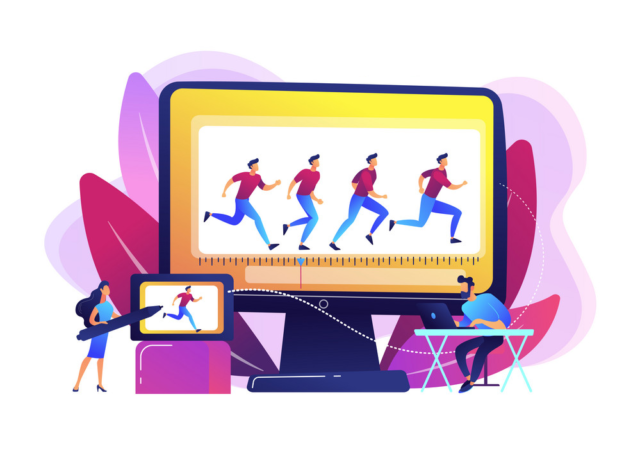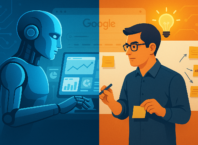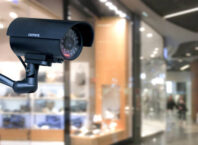What is Motion Graphics Animation?
Motion graphics animation is a technique that combines graphic design and animation to create moving visuals. It involves the manipulation and transformation of digital elements, such as text, images, shapes, and illustrations, to bring them to life through motion. Unlike traditional animation, which often involves character-based storytelling, motion graphics animation focuses on conveying information, ideas, or messages in a visually engaging and dynamic manner. Motion graphics animation has become increasingly popular in various industries, captivating audiences with its dynamic visuals and engaging storytelling. From animated logos and explainer videos to promotional content and social media ads, motion graphics animation has the power to bring ideas to life in a visually compelling and memorable way. In this blog post, we will delve into the world of motion graphics animation, exploring its definition, techniques, applications, benefits, and the future of this art form. Whether you are a business owner looking to elevate your brand’s visual identity or a creative professional interested in adding motion to your designs, this comprehensive guide will provide you with a solid foundation to understand and appreciate the art of motion graphics animation.
I. What is Motion Graphics Animation?
- Definition of motion graphics animation and its distinction from traditional animation.
- Exploring the elements of motion graphics: typography, iconography, illustrations, and visual effects.
- How motion graphics animation combines design principles with movement to convey messages effectively.
- The evolution of motion graphics animation from its origins to its current state.
II. Techniques and Tools in Motion Graphics Animation
- Overview of key techniques used in motion graphics animation, including keyframing, easing, timing, and sequencing.
- Introduction to popular software and tools: Adobe After Effects, Cinema 4D, Blender, and others.
- The role of vector-based graphics and how they enable scalability and flexibility in motion design.
- The use of 3D animation in motion graphics and its impact on visual storytelling.
- Advances in technology and software have influenced motion graphics animation.
III. Applications of Motion Graphics Animation
- Marketing and Advertising: How motion graphics animation elevates brand messaging through dynamic visuals, explainer videos, and social media ads.
- Film and Television: The role of motion graphics in titles, transitions, visual effects, and motion tracking in movies, TV shows, and documentaries.
- User Interface (UI) and User Experience (UX) Design: How motion graphics enhance interactivity, feedback, and user engagement in websites, applications, and digital interfaces.
- Education and Training: The use of motion graphics animation in e-learning courses, tutorials, and presentations to enhance comprehension and engagement.
- Corporate Communications: The power of motion graphics animation in corporate videos, internal communications, and presentations to convey complex information in a visually appealing and engaging manner.
- Augmented Reality (AR) and Virtual Reality (VR): The integration of motion graphics animation in AR and VR experiences to create immersive and interactive narratives.
IV. Benefits of Motion Graphics Animation
- Attention-Grabbing and Memorable: How motion graphics animation captures attention and leaves a lasting impression on viewers.
- Simplifying Complex Concepts: The ability of motion graphics to simplify and explain intricate ideas and processes through visual storytelling.
- Enhancing Brand Identity: How motion graphics animation helps brands communicate their unique personality and values visually, establishing a cohesive and impactful brand identity.
- Increased Engagement and Conversions: The impact of motion graphics animation on audience engagement, dwell time, social sharing, and conversion rates.
- Versatility and Adaptability: The flexibility of motion graphics animation across various platforms, screens, and devices, allowing for seamless integration in different mediums and environments.
- Emotional Connection: The ability of motion graphics animation to evoke emotions and create a deeper connection with the audience.
V. The Future of Motion Graphics Animation
- The evolving role of motion graphics animation in emerging technologies such as artificial intelligence, machine learning, and mixed reality.
- The integration of motion graphics animation in interactive and immersive experiences, such as interactive storytelling and gamification.
- The potential of motion graphics animation in virtual influencers and digital avatars.
- The influence of social media platforms and short-form content on the future of motion graphics animation.
- The role of motion graphics animation in enhancing user experience in the age of digital transformation.
Wrap Up
Motion graphics animation is a powerful visual storytelling tool that combines design, movement, and creativity to captivate audiences and convey messages effectively. With its broad range of applications, numerous benefits, and constant evolution, motion graphics animation continues to shape the way we communicate and engage with content. By understanding the techniques, tools, applications, and future trends of motion graphics animation, businesses and creatives can unlock new possibilities for visual expression, elevate their storytelling capabilities, and stay ahead in an increasingly competitive digital landscape. Embrace the art of motion graphics animation and unleash the potential of captivating visual narratives.

















































































